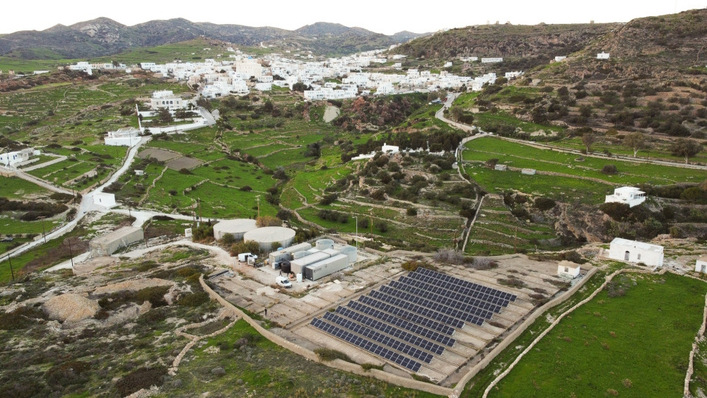Erdgas Südwest announced the starting signal for the construction of its latest and so far largest floating photovoltaic project: In the next few weeks two floating photovoltaic plants with an output of around 1.5 MW are to be built on a quarry pond in Leimersheim with approx. 14,000 square meters, the company announced in a press release. Before the end of this year, one of the systems is to be commissioned and the electricity used to supply the Pfadt gravel plant there.
"We are delighted that the plant is now being implemented after a long period of planning and preparation", project manager Peer Köster, who is in charge of the project on the part of Erdgas Südwest together with his colleague Melanie Gimmy, is quoted.
High acceptance on site
"I am proud that such a progressive project is being implemented in our region. I am sure that all those involved and also the community with its citizens will benefit from the plant in the long term, because the majority of the energy generated will be used directly in Leimersheim. We want to and must stand up for the energy turnaround on site," says Matthias Schardt, local mayor of Leimersheim and mayor of the Rülzheim association community, according to the press release.
According to Erdgas Südwest, the plant will save a total of 548,000 kilograms of CO2 per year compared to the energy mix in 2019 and the environment will be significantly relieved by the purchase of green electricity. Energy-intensive gravel pits in particular are ideally suited for the conversion to PV electricity, because the sun shines primarily during production times, which means that the power generation matches the load profiles exactly, the company announced.
No competition for space with other uses
In addition to CO2, the floating photovoltaic system also saves space on open spaces: "The system does not compete with other construction projects, agriculture or other uses," says Köster. In addition, to counteract possible negative effects on the flora and fauna in and around the lake, various measures would be taken, according to an official species protection report.
A total of 3,744 solar panels on 6,500 floating bodies are to be placed on the dredging lake in Leimersheim and fixed with a base anchorage. According to the press release, the lake has an area of 160,000 square meters, of which the installations covered only about 8 percent.
40 percent of the electricity is used for self-sufficiency
From the start of operations in late autumn 2020, 739.44 kW of capacity will initially be used and around 780,000 kWh of electricity generated, the company announced. About 40 percent of this will be used to supply the Pfadt gravel plant, the rest will be fed into the public grid and will then benefit the region's households.
"Due to the political framework conditions, we have to look at the PV systems individually in order to avoid a merging of the systems in the sense of the EEG. Therefore we have to split the commissioning into two parts", Gimmy is quoted as saying.
Need for political action
"From our point of view, there is an urgent need for action on the part of politicians, because every day that is spent using renewable energy counts," she says. After all, under other conditions, 1,560,000 kWh of electricity could be generated from solar energy in one fell swoop and thus support the regional energy turnaround.
However, due to the current legal situation, Erdgas Südwest will not add the second plant with the same capacity and the same generation potential until the end of 2021. (hcn)
Read more about floating PV here







